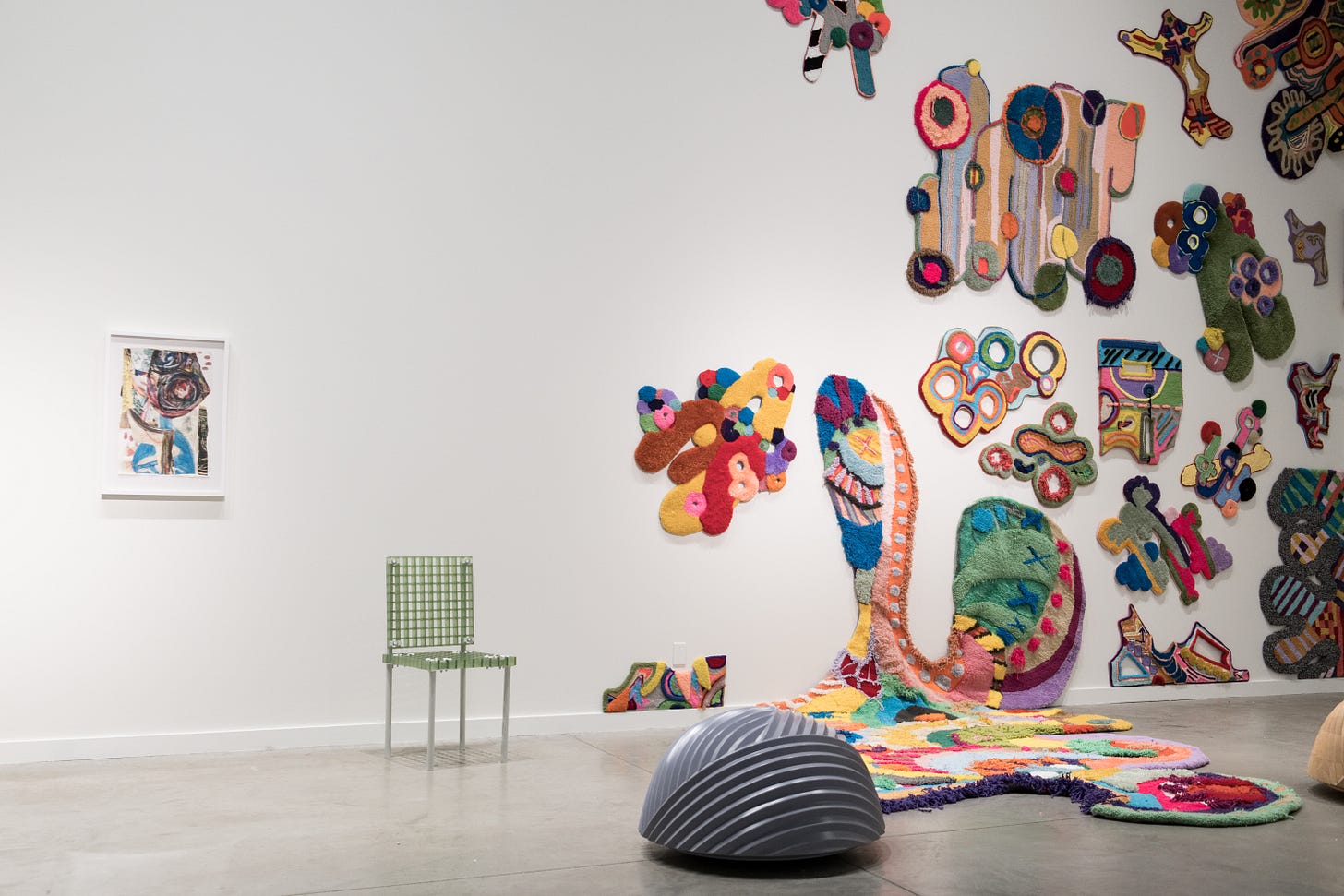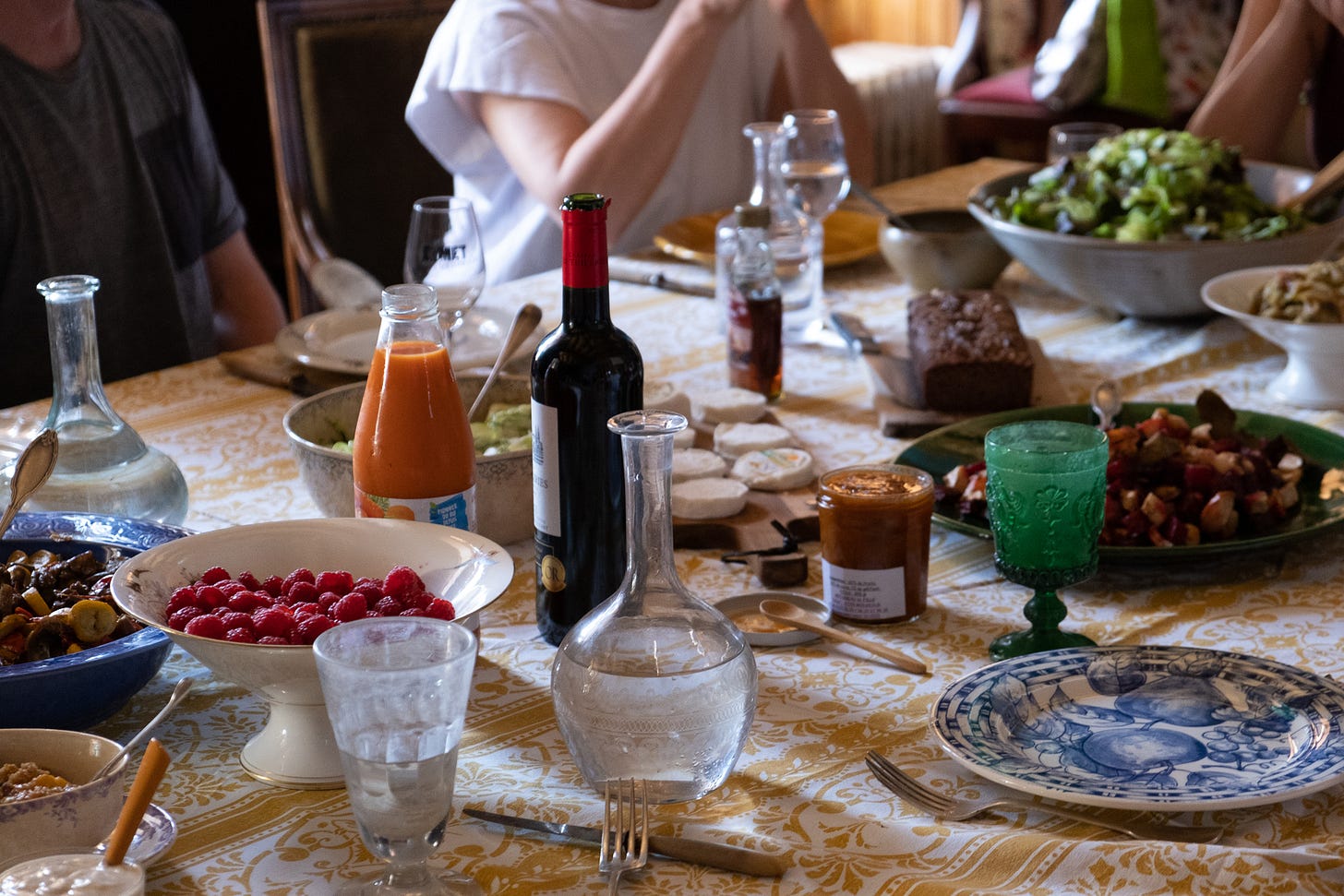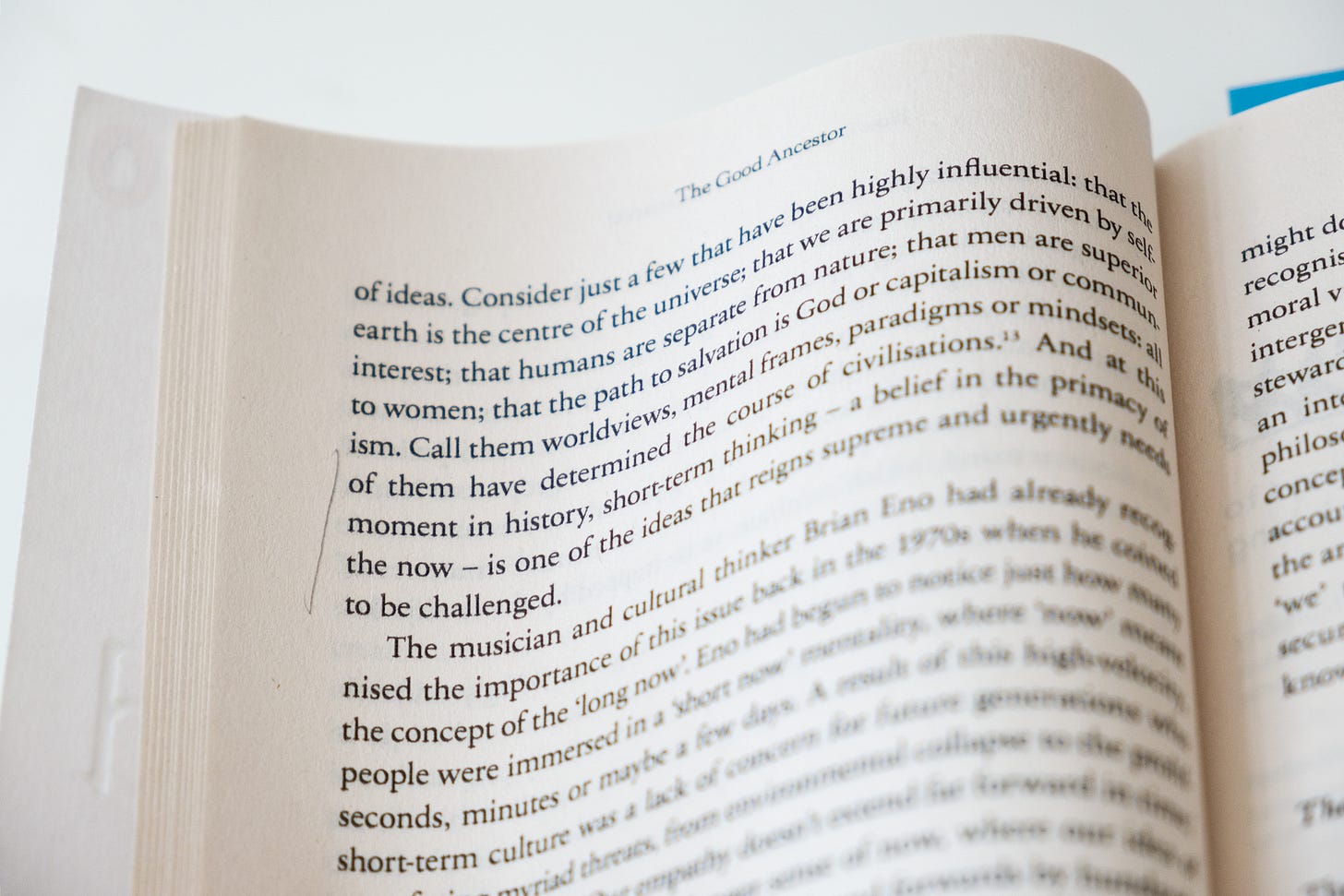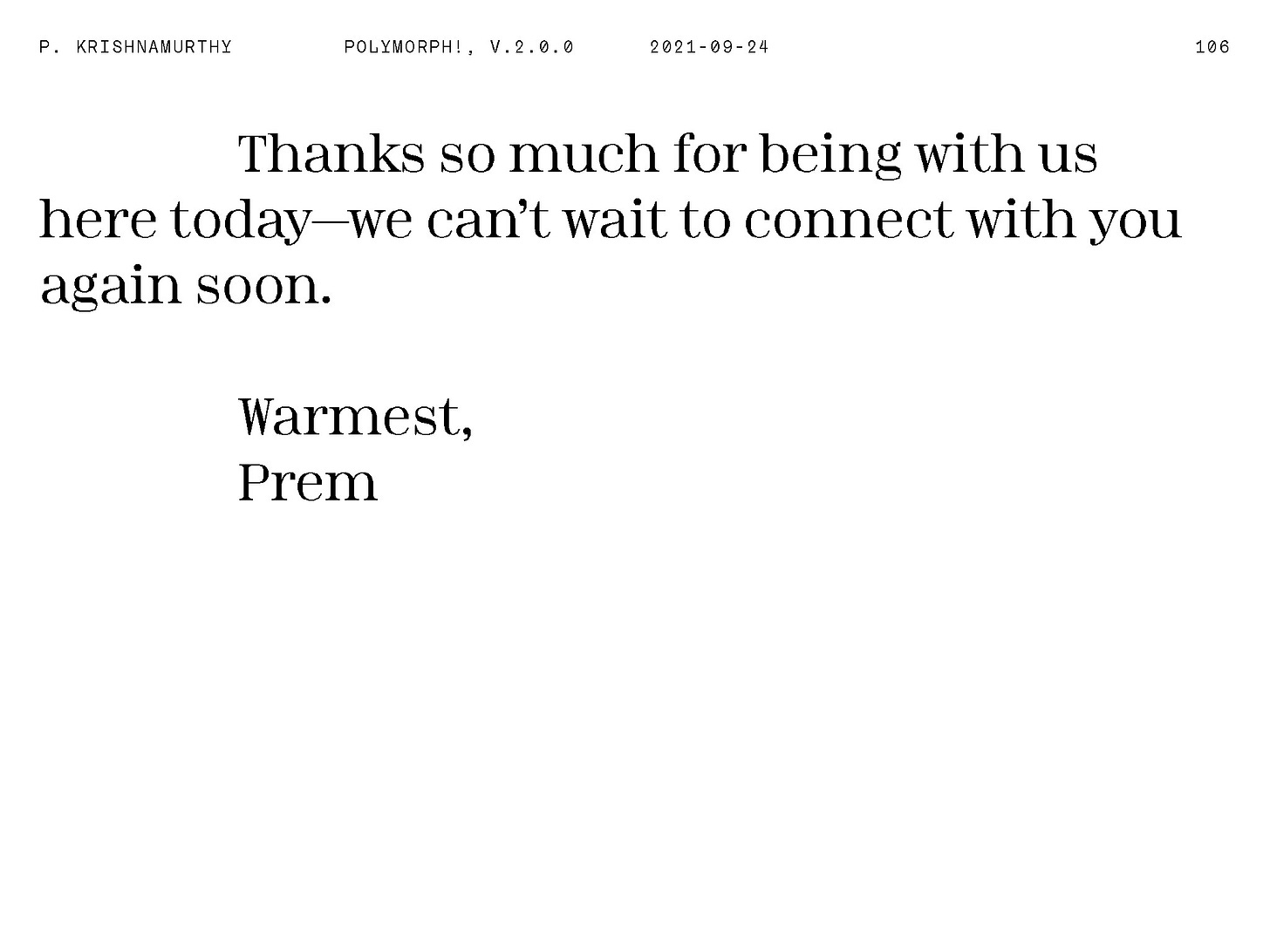October’s re-openings
Long overdue, semi-monthly newsletter with exhibitions, events, readings, and more
Dear loved ones, far and near,
It’s been a while—the spring and summer was packed. Moving apartments, resuming travel, plus endless writing and curatorial deadlines amidst the tumult around the world has kept me busy. So, I disappeared in order to focus on well-needed offline and smaller-scale conversations.
But things are turning around: this week we open Grand Prototypes, Humble Tools, the FRONT 2022 Preview Exhibition, at Transformer Station in Cleveland. As the first physical show of the triennial—a work-in-progress since 2019—it explores ideas of daily practice, shared joy, and transformation within an ever-changing installation. Featured participants include Art Therapy Studio, Asad Raza, Dansbana!, Dexter Davis, Jacolby Satterwhite, Kameelah Janan Rasheed, La Wilson, Langston Hughes, Leigh Ledare, Loraine Lynn, Paul O’Keefe, Renée Green, Sarah Oppenheimer, SO-IL, Tony Cokes, and others. After not having installed an exhibition for over two years, I’m reminded why I’m involved in this thing called art: because it brings different folks and ideas together in a space of collaboration as well as negotiation. What a thrill! If you’ll be anywhere near Cleveland, please come celebrate with us tomorrow at the opening party. Artsy is also hosting an online benefit auction to support FRONT, which you can check out before it closes on Friday at 1pm EST.

This grand pre-opening follows on several non-stop, action-packed weeks. Just before returning to Cleveland and the USA, I was honored to present a new main stage talk at the 2021 AIGA Design Conference. At the invitation of the one-and-only Rick Griffith, I premiered my current thinking around three aesthetic strategies that I call bumpiness, juxtaposition, and generosity. Recent talks (such as my keynote for the 2021 TDC Conference) focused on bumpiness in particular, but I have a hunch that the potential for truly transformative art and design starts where all three intersect. Since the conference documentation is limited access, I’m making Polymorph! v.2.0.0—which exists as a hybrid publication and performance score—freely available. As always, I’d love to hear your thoughts, comments, and feedback!

Some of the other things happening on- and offline include new writing on art, learning, and collaboration (forthcoming from Kunstinstituut Melly and Domain Books), new experimental workshops and teaching (at Eina Idea in Barcelona and in my guest professorship at Hochschule Düsseldorf), new and updated artist talks (at VCUarts Qatar as well as the online recording of my lunchtime talk at Cleveland Institute of the Arts), and much much more. In case you’re wondering: my mother recently made me promise to plan a vacation!
Alongside the professional work, there has also been some time for personal strides forward. Over the summer, I was lucky to take part in The Hologram’s 7-week course focused on male-gendered folks, entitled “Why be vulnerable?”. Thank you to the generous facilitators (Sir) Lyra Hill, Nat Boon, and Sage Jaffrey and the 20-plus participants for a learning experience that taught me about asking for help from others. In late August, I also joined the first European gathering of Enspiral, a network of “people working on stuff that matters”. The event followed the principle of open space planning, in which the workshop agenda was co-created by the attendees. We were hosted by Life Itself in their sprawling Bergerac retreat center, close to the legendary Plum Village. Life Itself will also be offering monthly residencies under the banner of “Sympoiesis”, which could be a good opportunity if you’re looking for an experience combining contemplative activism, creativity, and community (as well as next-level vegetarian and vegan cooking).

Throughout all of these activities, I’ve been listening to music, such as the newest digital mixtape by artist Martin Beck. Simply entitled matter, it starts with a guided movement piece by 5Rhythms founder Gabrielle Roth, and continues from there on a 90-minute percussive journey. During my heavy writing period this summer, I found myself listening to Martin’s mix on a daily basis. You can download the MP3 playlist and track listing here—I’ll be curious to hear how it makes you feel!
Let’s end with readings. Although my book list has become very long, here are a handful of recommendations culled from the past months:
Dan Barber’s The Third Plate: Field Notes on the Future of Food was hands-down one of my favorite and most timely reads of the summer. It makes a clarion call for integrated systems of food production and life. Dan hosted my design partner Chris Wu and me as guests at Blue Hill at Stone Barns this summer—a transformative culinary experience. To prepare for that next level meal, we made a video with the collaboration of a friendly inchworm.
Not long after our talk together in April, adrienne maree brown released Holding Change, her newest book on emergent strategy and facilitation. I was so excited about the release that I inadvertently ordered multiple copies! Thankfully, I had several people to give them to. I’m also looking forward to checking out Grievers, adrienne’s first published novel. This does conflict with my moratorium on new book purchases until I work through the lockdown stacks, but, as I like to say: every good system has failure built into it.
In June, I began to circulate a trio of PDFs to friends and FRONT 2022 artists. They include Fumi Okiji’s powerful “Storytelling in Jazz Work as Retrospective Collaboration”, recommended to me by artist Julie Mehretu; the introduction of Craig Everett’s Numbers and the Making of Us: Counting and the Course of Human Cultures, a fascinating take on human language and the structures of cognition; as well as the start of Ted Gioia’s Healing Songs, which traces a cross-cultural, historical arc of how healing, music, and medicine are intertwined. I can’t entirely explain why these three texts feel connected to each other, but their novel approaches to music and language has provided ample inspiration.
The most compact book I’ve read recently is Modern Animal by Yevgenia Belorusets. It’s the fifth book from the brilliant, bimonthly subscription service Isolarii. Their unique series of tightly-edited and well-designed books has proven to be the small packages arriving in the mail that bring me the most joy. With its self-reflexive, experimental, and playful take on human-animal relations, this tiny book teaches me something about what a little literature can do to tweak your perspective.
Finally, last February, I was invited to moderate an unusual panel at the Jan van Eyck Academie’s “Urgency Intensive”. One of the most powerful speakers at the symposium was public philosopher Roman Krznaric. It took me a while, but I just finished his The Good Ancestor: How to Think Long Term in a Short-Term World. Krznaric’s book represents a multi-level framework for enacting a paradigm shift in how contemporary society frames the future. Something that I’ll be keeping in mind as we creep ever closer towards 02022.*
I could go on and on, but there’s only so much time in a month. Let’s try a new way to close, by quoting directly from Polymorph!, v.2.0.0:
* This nomenclature follows a proposal by Roman Krznaric inspired by the Long Now Foundation: to add an extra leading zero before dates in order to emphasize longer-than-human timeframes. As I’m already prepping for my next big exhibition, Our Silver City 2094 at Nottingham Contemporary—which is set at the end of this century and includes objects from the past 400 million years—it seems like a good practice to try out.






